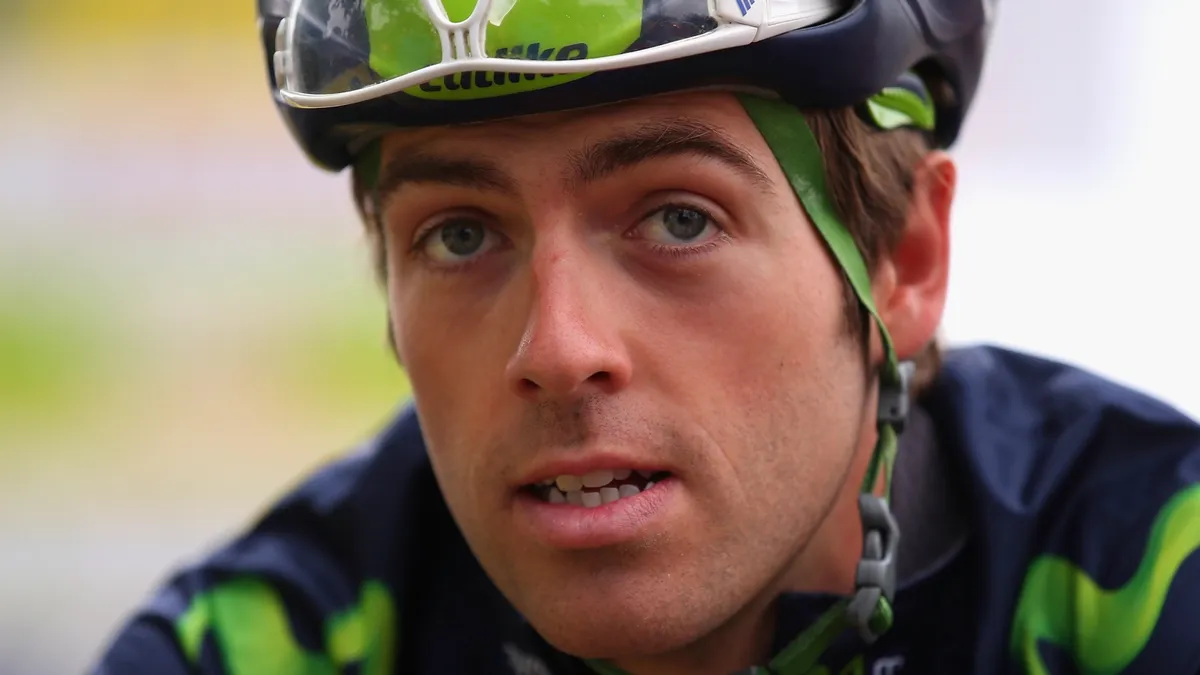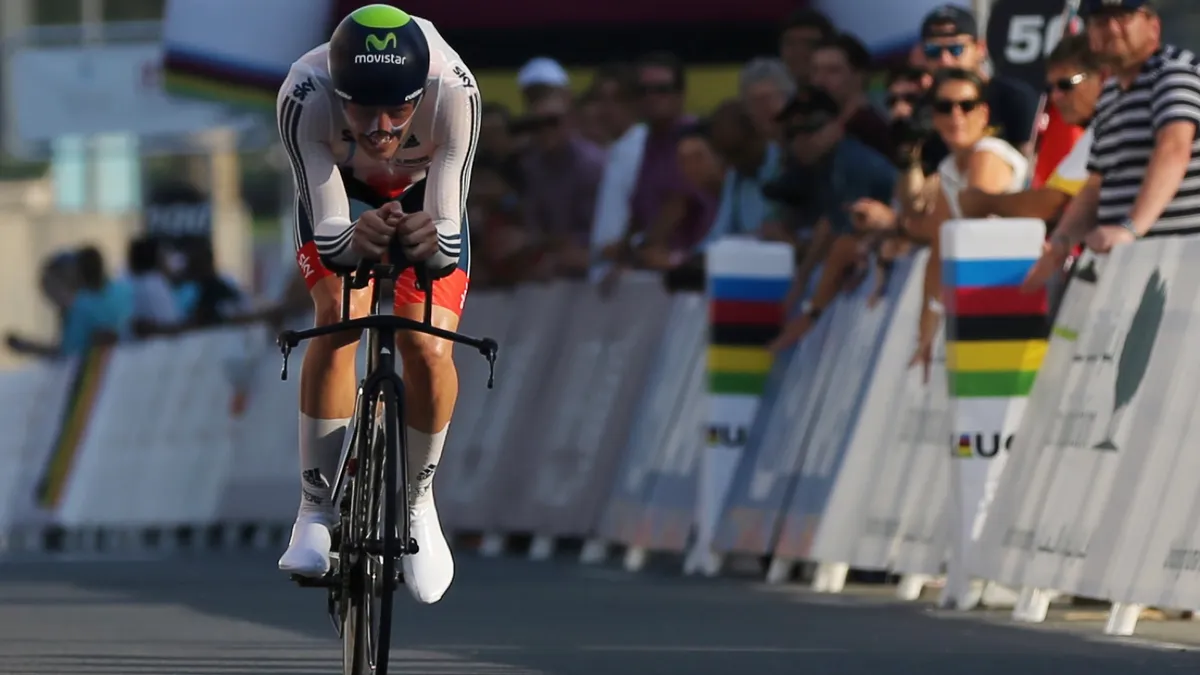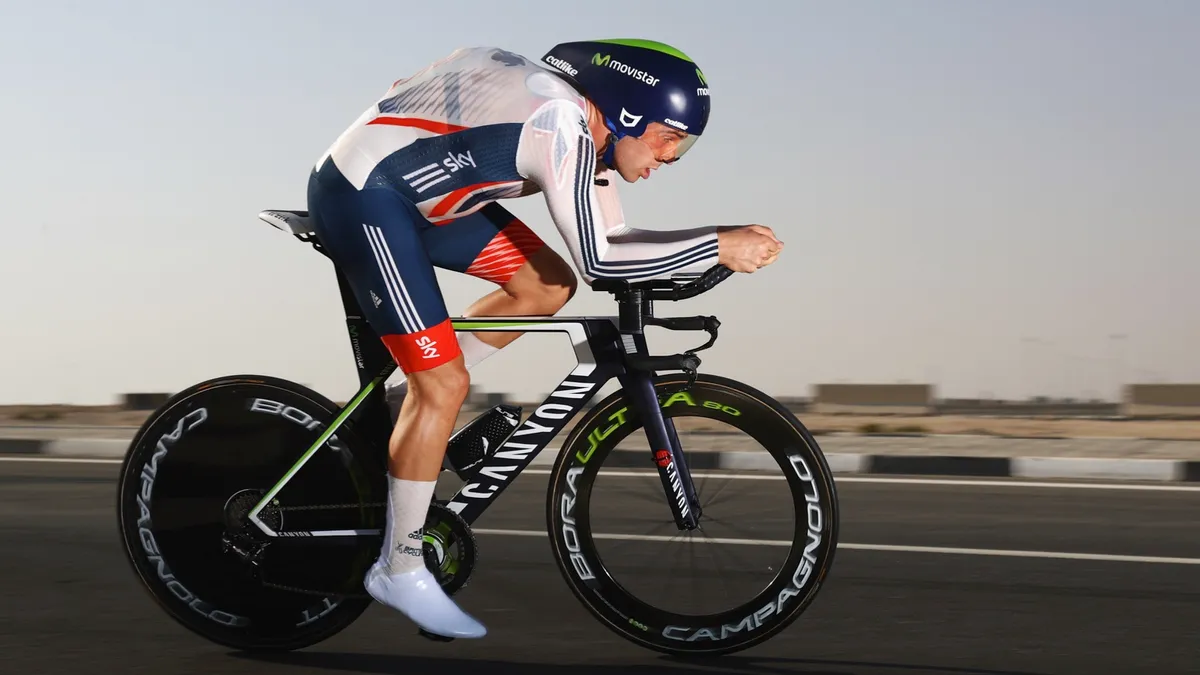Ahead of the Garmin Ride Out in the New Forest, BikeRadar sat down with British time trial specialist Alex Dowsett and discussed data, time trialling and continuing to develop as a rider.
Dowsett began his career at the Trek-Livestrong development team, alongside talents such as Taylor Phinney, Ben King and Jesse Sergent, before spending the 2011 and 2012 seasons at Team Sky.
For the last five seasons Dowsett has been with the Spanish Movistar Team and in that time he has won a Giro d’Italia stage, the GC at Bayern Rundfahrt and three of his four National time trial titles.
2018 sees Dowsett move to the Swiss registered Katusha-Alpecin team, which will see him stay aboard his favoured Canyon bikes and ride alongside the likes of World TT champion Tony Martin, and arguably this season’s strongest sprinter in Marcel Kittel.

What wins you a time trial?
Speed is what wins you time trials and I think in this day in age a power meter has actually slowed people down.
You get back to the village hall if you’re in the UK, or the team bus if you’re racing and hear “Cor I averaged 445 watts” and I will quite often come back having averaged 420 watts but beaten them because of how I’ve used it.
In a race that I won in Germany, a teammate of mine came back and was very perplexed because he’d averaged five more watts than I had, he weighed 8kg less and I’d rolled him for about two minutes, he just didn’t get it.
I can’t decide whether knowing what corners are coming up is a good thing or a bad thing the way pro cycling is
In the race there was a big descent, followed by a climb and I said to him, well what did you do on the descent, pedal down at 400 watts? "Yeah, yeah," so how fast were you going? "About 60-65km/h," whereas I got to the top of the descent, booted it, sat on my top tube and stopped pedalling and I was doing 75km/h and so was doing 10–15km/h faster, but at zero watts!
On the climb afterwards I asked him how much he put out up that, "About 400 watts," but I pedalled up it at 500 watts because I could after my rest and had a higher speed running into it. So it’s more about knowing how to use your power.
Are you still learning as a time triallist?
There are some guys who are just absolutely horse power over me and there is only so much you can do about that in terms of training, so I have to be quite clever with how I time trial.
For me, the more technical it is and the more you have to think about it the better it is for me. I still mess it up though, like the one in the BinckBank Tour a few weeks ago pacing wise.
The race actually started the day before because where you finished on GC determined where you started on the TT. Some teams knew the bad weather was coming in and there was a bunch of us TT guys and GC riders at the back of the bunch and we were track standing at the line playing chicken with each other!
The TT was 3km out, 3km through some corners and 3km back. I’m usually stronger at the end of a time trial than the start compared to others, a lot of people go out the blocks like a gun and fade, but this race I went out too easy.
I went out not quite cruising, I was efficient for the first 3km but I wasn’t fighting like I should’ve been because I didn’t anticipate how much rest I was going to get through all the technical corners. When it came to the 3km home, I think I sat at 500–600 watts for most of it, which I shouldn’t really be able to do at the end of a time trial, but I could because I’d messed it all up.
I finished 11th in the end, which was lucky and basically down to the weather. If everyone had the same conditions I would’ve been outside the top thirty easy, but you learn, you learn every time.

When using your Garmin, what are the key data fields for you and how do they differ between training and racing?
Road races are quite different to time trials in terms of what I have in front of me. For road races we always have the route plugged into the Garmin beforehand so we can see what’s coming up in terms of profile and in terms of corners.
I can’t decide whether knowing what corners are coming up is a good thing or a bad thing the way pro cycling is. I grew up in a motor racing environment where you brake going into a corner, but in pro cycling you seem to sprint into the corner, start turning in and then assess how sharp the corner is. Then you pile on the brakes, then hope for the best, then hope you exit the corner.
There is this one in Dubai we do every year as we come onto the Palm and just as you turn left the road surface changes from grippy brick to very slippery tarmac and everyone collects on the apex, but they exit the corner in one big bunch. Yeah, so I still haven’t decided if knowing what is coming up is a good thing or a bad thing.
What screen do you use on your Garmin?
I’ll have the route, profile and two bits of data — power output and distance remaining — but I’ll flick across the screens quite a lot in a race as well, especially if it’s boring!
I’ll work out what’s going on, all the maths like your average speed, how long it’s going to take and whether you’re in for a four-hour day or a five-hour day. Maybe see if you can slip under four hours for a bit, just the maths side of things
Is this the same if you’re in the bunch or in a breakaway?
Yeah exactly, I’ll flick between the screens and on the data screen, I’ll have every bit of data you can possibly get in terms of lap averages, power output, time and speed.
In a time trial I won’t generally use the maps as nine times out of 10 I would’ve recce’d the course before doing it, so I won’t really need them, but I will have all the data in front.
If it’s an out and back time trial then I’ll average over 30mph, so a simple one is if you average 32mph downhill on the way out you know you need to be doing 28–29mph on the uphill coming back to get the average.
If it’s a time trial in a stage race then I need just as much information as possible — if nothing else, it’s just to take my mind off of how much it is hurting. You’re constantly looking at it; is it good power, is it bad power, what do I need to do…
I will have a strategy before the time trial as well and it will be sticking to that. So for me it’s about taking myself as far away from how much hurt I’m putting myself through and more into having the strategy and using the information the Garmin is giving you accordingly.

